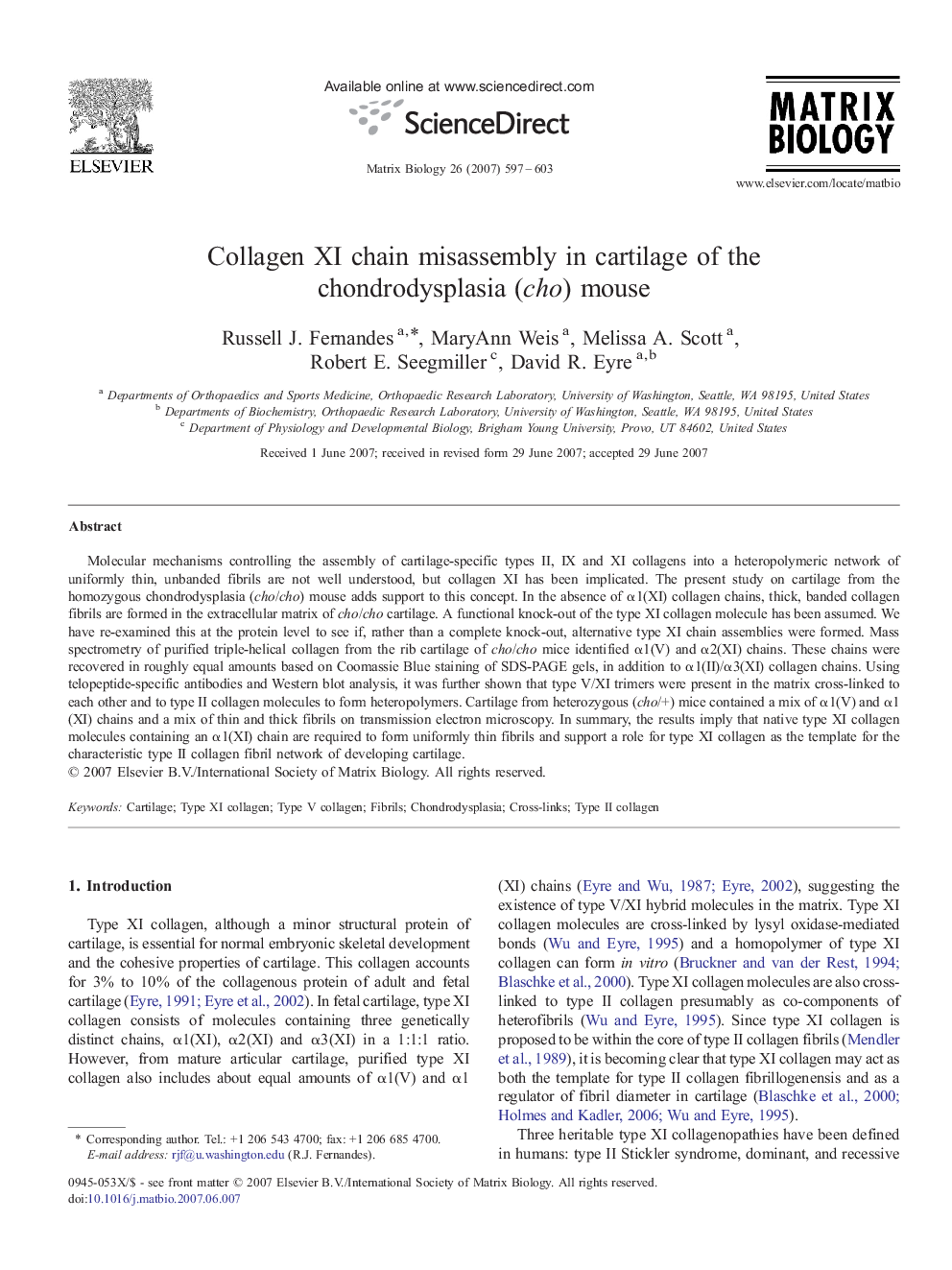| Article ID | Journal | Published Year | Pages | File Type |
|---|---|---|---|---|
| 2145456 | Matrix Biology | 2007 | 7 Pages |
Abstract
Molecular mechanisms controlling the assembly of cartilage-specific types II, IX and XI collagens into a heteropolymeric network of uniformly thin, unbanded fibrils are not well understood, but collagen XI has been implicated. The present study on cartilage from the homozygous chondrodysplasia (cho/cho) mouse adds support to this concept. In the absence of α1(XI) collagen chains, thick, banded collagen fibrils are formed in the extracellular matrix of cho/cho cartilage. A functional knock-out of the type XI collagen molecule has been assumed. We have re-examined this at the protein level to see if, rather than a complete knock-out, alternative type XI chain assemblies were formed. Mass spectrometry of purified triple-helical collagen from the rib cartilage of cho/cho mice identified α1(V) and α2(XI) chains. These chains were recovered in roughly equal amounts based on Coomassie Blue staining of SDS-PAGE gels, in addition to α1(II)/α3(XI) collagen chains. Using telopeptide-specific antibodies and Western blot analysis, it was further shown that type V/XI trimers were present in the matrix cross-linked to each other and to type II collagen molecules to form heteropolymers. Cartilage from heterozygous (cho/+) mice contained a mix of α1(V) and α1(XI) chains and a mix of thin and thick fibrils on transmission electron microscopy. In summary, the results imply that native type XI collagen molecules containing an α1(XI) chain are required to form uniformly thin fibrils and support a role for type XI collagen as the template for the characteristic type II collagen fibril network of developing cartilage.
Related Topics
Life Sciences
Biochemistry, Genetics and Molecular Biology
Cancer Research
Authors
Russell J. Fernandes, MaryAnn Weis, Melissa A. Scott, Robert E. Seegmiller, David R. Eyre,
